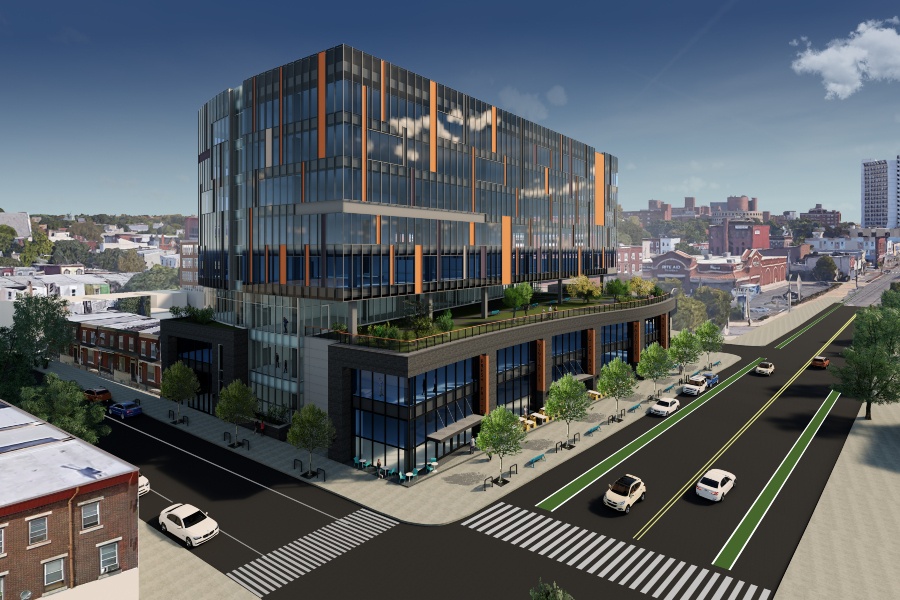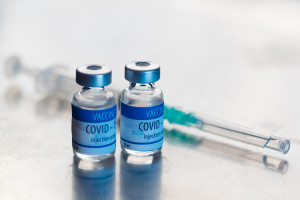Q&A: Ben Franklin Tech Partners Is Doubling Down on Philly Life Sciences
The region's largest tech investor tells us why they are developing an “innovation floor” at the new 3.0 University Place development.

The Wistar Institute and University Place Associates have collaborated to build 3.0 University Place, a 240,000-square-foot “research and discovery hub” at 4101 Market St. Ben Franklin Tech Partners will design an “innovation floor” inside. / Sheward Partnership
Ben Franklin Technology Partners (BFTP) is a force for investment in the region’s early-stage tech companies. The organization has invested in 4,500 Pennsylvania-based tech companies since its inception and has a portfolio that boasts $354 million in funding raised in 2018 alone. But BFTP’s chief executive officer RoseAnn B. Rosenthal believes in doing more than just throwing money at companies of promise. For the last 23 years, Rosenthal has fought to establish BTFP as more than just a group of venture capitalists by offering young business owners access to critical startup resources and mentorship.
Similarly, when BFTP recently announced that it would move into the anticipated 3.0 University Place, a new $100 million development from University Place Associates and The Wistar Institute, we figured they’d be more than regular tenants. We were right.
BFTP will not only be establishing a 28,500 square-foot “innovation floor” but will also play an integral role in advising the designers on how to erect the space with a tech company’s needs in mind.
NextHealth PHL sat down with Rosenthal and BFTP’s vice president of technology commercialization Anthony Green to learn more about BTFP’s upcoming innovation floor, and how the organization’s presence at 3.0 University Place might affect the local life sciences community in the future.
NextHealth PHL: You have a very strong presence at the Navy Yard. What made you decide to be part of this project in University City?
Rosenthal: We do have a very strong presence at the Navy Yard, but we also have a presence in other facilities around the region. So, this is a continuation of that strategy, to place Ben Franklin where there are activities ongoing around innovation and entrepreneurship. It’s less about where the action is and more about where we believe the action can be. So we’re looking for areas that are sort of on the margin, where our presence can help it succeed.
Green: This was a new opportunity to get involved with a project that is expanding that innovation corridor past the Science Center into West Philadelphia and up to the Enterprise Center. The principals of UPA, who we knew from 1776, came to us and said they wanted to put in an innovation floor. They wanted us to help manage it in terms of programming, working with the companies there and providing services as we would do at any of our Ben-in-Residences. But one of the differences here is that there will be physical lab space that we’re going to help manage. It’s a slightly different expansion of our role in the region, given the tremendous amount of spinouts emerging from the institutions.
Tell me more about your vision for the innovation floor.
Green: It will be a mixed-use space. There will be office space, conference rooms, and workshop rooms. Those will be occupied not just by Ben Franklin but by companies and some of the service providers that we work with who provide specialized resources. The other piece to this is the wet/dry lab space that’s being worked out now for companies that are graduating out of the institutions and need a place to go.
Right now there is a dearth of tinkering space, whether that’s life science space or even engineering space. There’s not a lot of space in the region for these early-stage companies. It’s also one of the reasons Wistar decided to partner with UPA as well. We’ve funded several Wistar spin-out companies and they are the ideal type of candidate for this space: they’re too small for some of the larger spaces in the region, they don’t have as much money available, and they need to find a space where they can hang out for two or three years until they graduate. Part of our job is to help nurture those companies so they can move out to bigger spaces and bring in the next cohort. It’s a place for them to go and have resources that they can’t necessarily get access to on their own.
This type of partnership is unique in that you will be providing input on the design of the space. Why is design so important for innovation here?
Rosenthal: Our expertise is not in design. Our expertise is in providing the input to the developers who are designing the space to have them understand what functionality needs to be there and how it needs to operate to be effective for the tenant. And then people who are much smarter than we are in terms of how things should look and can look and have that vision and that talent will be the designers.
Green: The UPA team has been completely intentional in making this a place where both the community can be impressed with what it’s a part of as well as concentrated enough to get done what they need to. It’s wonderful to have a beautiful co-working space in a multi-use room where you can host 150 people, but if you can’t get your work done in that same space, it doesn’t do anyone any good. By putting all of that functionality into a convening space and an actual working thriving environment that can support the story of the region, there’s the opportunity for entrepreneurs, investors and anyone else who passes through the space to understand and be impressed with what they’re part of.
Roughly 40 percent of your portfolio is made up of life science companies. Why do you think investment in the life sciences is so important for the region at this time?
Rosenthal: It’s not just about this particular time. I think it’s in addition to what has been going on. The southeast, for a long time now, has had a strength in the life sciences. And so it’s a continuation of what has been here in the region. Now with all of the fantastic developments coming out of the universities, the attention that bio has brought to the city in terms of the wonderful innovations that are coming out of Philadelphia, it clearly is a strength. It is clearly a strong suit for our region and it’s important to support more innovations that are coming out of that arena every day.
Green: At this moment, there is almost $1 billion in NIH funding in the region. That’s an enormous amount of funding for helping to generate the next set of technologies and healthcare solutions. And the universities have really retooled themselves for getting companies and technologies out the door in a way that hasn’t been done in the past. They’re really getting better at helping to create companies and making the licensing processes easier so that all of these great technologies have a place to go. There is a lot of push now from the universities. We need to have a place where those companies can come and grow.
What do you hope this project will yield five to ten years from now?
Rosenthal: We hope that this environment produces more companies that achieve success in this region and provide products to the marketplace that are beneficial and provide jobs and growth for the region. That’s what we hope for at the end of the day.


